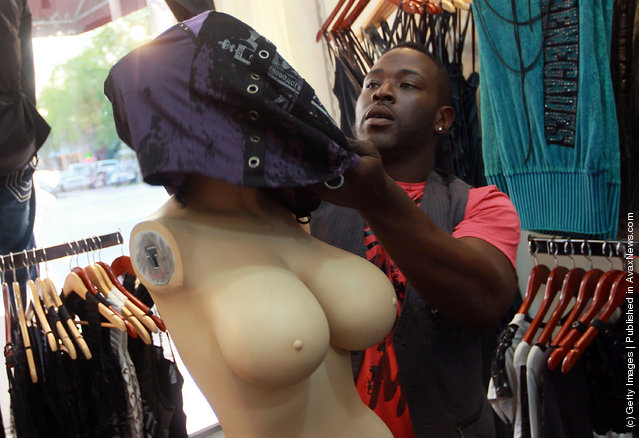
Following is the text of the Gross Domestic Product from the Commerce Department.
Real gross domestic product -- the output of goods and services produced by labor and property located in the United States -- increased at an annual rate of 1.9 percent in the first quarter of 2011, (that is, from the fourth quarter to the first quarter), according to the "third" estimate released by the Bureau of Economic Analysis. In the fourth quarter, real GDP increased 3.1 percent.
The GDP estimate released today is based on more complete source data than were available for the "second" estimate issued last month. In the second estimate, the increase in real GDP was 1.8 percent.
The increase in real GDP in the first quarter primarily reflected positive contributions from personal consumption expenditures (PCE), private inventory investment, exports, and nonresidential fixed investment that were partly offset by negative contributions from federal government spending and state and local government spending. Imports, which are a subtraction in the calculation of GDP, increased.
Annual Revision of the National Income and Product Accounts
The annual revision of the national income and product accounts (NIPAs) will be released along with the "advance" estimate of GDP for the second quarter of 2011 on July 29. In addition to the regular revision of estimates for the most recent 3 years and the first quarter of 2011, GDP and some components will be revised back to the first quarter of 2003 (see "Preview of the Upcoming Annual NIPA Revision" in the May Survey of Current Business). The August Survey will contain an article that describes the annual revision in detail.
FOOTNOTE.--Quarterly estimates are expressed at seasonally adjusted annual rates, unless otherwise specified. Quarter-to- quarter dollar changes are differences between these published estimates. Percent changes are calculated from unrounded data and are annualized. ``RealüEestimates are in chained (2005) dollars. Price indexes are chain-type measures.
The deceleration in real GDP in the first quarter primarily reflected a sharp upturn in imports, a deceleration in PCE, a larger decrease in federal government spending, and a deceleration in nonresidential fixed investment that were partly offset by a sharp upturn in private inventory investment.
Motor vehicle output added 1.18 percentage points to the first-quarter change in real GDP after subtracting 0.27 percentage point from the fourth-quarter change. Final sales of computers added 0.10 percentage point to the first-quarter change in real GDP after adding 0.35 percentage point to the fourth-quarter change.
The price index for gross domestic purchases, which measures prices paid by U.S. residents, increased 3.9 percent in the first quarter, 0.1 percentage point more than in the second estimate; this index increased 2.1 percent in the fourth quarter. Excluding food and energy prices, the price index for gross domestic purchases increased 2.3 percent in the first quarter, compared with an increase of 1.1 percent in the fourth.
Real personal consumption expenditures increased 2.2 percent in the first quarter, compared with an increase of 4.0 percent in the fourth. Real nonresidential fixed investment increased 2.0 percent, compared with an increase of 7.7 percent. Nonresidential structures decreased 14.8 percent, in contrast to an increase of 7.6 percent. Equipment and software increased 8.8 percent, compared with an increase of 7.7 percent. Real residential fixed investment decreased 2.0 percent, in contrast to an increase of 3.3 percent.
Real exports of goods and services increased 7.6 percent in the first quarter, compared with an increase of 8.6 percent in the fourth. Real imports of goods and services increased 5.1 percent, in contrast to a decrease of 12.6 percent.
Real federal government consumption expenditures and gross investment decreased 8.1 percent in the first quarter, compared with a decrease of 0.3 percent in the fourth. National defense decreased 11.8 percent, compared with a decrease of 2.2 percent. Nondefense was unchanged, after an increase of 3.7 percent. Real state and local government consumption expenditures and gross investment decreased 4.2 percent, compared with a decrease of 2.6 percent.
The change in real private inventories added 1.31 percentage points to the first-quarter change in real GDP, after subtracting 3.42 percentage points from the fourth-quarter change. Private businesses increased inventories $55.7 billion in the first quarter, following increases of $16.2 billion in the fourth quarter and $121.4 billion in the third.
Real final sales of domestic product -- GDP less change in private inventories -- increased 0.6 percent in the first quarter, compared with an increase of 6.7 percent in the fourth.
Gross domestic purchases
Real gross domestic purchases -- purchases by U.S. residents of goods and services wherever produced -- increased 1.7 percent in the first quarter, in contrast to a decrease of 0.2 percent in the fourth.
Gross national product
Real gross national product -- the goods and services produced by the labor and property supplied by U.S. residents -- increased 3.4 percent in the first quarter, compared with an increase of 2.8 percent in the fourth. GNP includes, and GDP excludes, net receipts of income from the rest of the world, which increased $51.1 billion in the first quarter after decreasing $10.5 billion in the fourth; in the first quarter, receipts increased $14.2 billion, and payments decreased $36.8 billion.
Current-dollar GDP
Current-dollar GDP -- the market value of the nation's output of goods and services -- increased 4.0 percent, or $146.7 billion, in the first quarter to a level of $15,018.1 billion. In the fourth quarter, current-dollar GDP increased 3.5 percent, or $126.3 billion.
Revisions
The "third" estimate of the first-quarter change in real GDP is 0.1 percentage point more than the second estimate. A downward revision to imports and an upward revision to inventory investment were largely offset by downward revisions to exports, to nonresidential fixed investment, and to state and local government spending.
Adv Second Third (Percent change from preceding quarter)
Real GDP 1.8 1.8 1.9 Current-dollar GDP 3.7 3.8 4.0 Gross domestic purchases price index 3.8 3.8 3.9
Corporate Profits
Profits from current production (corporate profits with inventory valuation and capital consumption adjustments) increased $48.7 billion in the first quarter, compared with an increase of $38.2 billion in the fourth quarter. Current- production cash flow (net cash flow with inventory valuation adjustment) -- the internal funds available to corporations for investment -- increased $16.7 billion in the first quarter, compared with an increase of $36.9 billion in the fourth.
Taxes on corporate income increased $33.2 billion in the first quarter, in contrast to a decrease of $1.3 billion in the fourth. Profits after tax with inventory valuation and capital consumption adjustments increased $15.5 billion in the first quarter, compared with an increase of $39.5 billion in the fourth. Dividends increased $14.8 billion, compared with an increase of $8.9 billion; current-production undistributed profits increased $0.7 billion, compared with an increase of $30.6 billion.
Domestic profits of financial corporations decreased $66.3 billion in the first quarter, in contrast to an increase of $57.7 billion in the fourth. Domestic profits of nonfinancial corporations increased $60.7 billion in the first quarter, in contrast to a decrease of $10.1 billion in the fourth. In the first quarter, real gross value added of nonfinancial corporations increased, and profits per unit of real value added increased. The increase in unit profits reflected an increase in unit prices and a decrease in the unit labor costs; unit nonlabor costs were unchanged.
The rest-of-the-world component of profits increased $54.4 billion in the first quarter, in contrast to a decrease of $9.4 billion in the fourth. This measure is calculated as (1) receipts by U.S. residents of earnings from their foreign affiliates plus dividends received by U.S. residents from unaffiliated foreign corporations minus (2) payments by U.S. affiliates of earnings to their foreign parents plus dividends paid by U.S. corporations to unaffiliated foreign residents. The first-quarter increase was accounted for by an increase in receipts and a decrease in payments.
Profits before tax with inventory valuation adjustment is the best available measure of industry profits because estimates of the capital consumption adjustment by industry do not exist. This measure reflects depreciation-accounting practices used for federal income tax returns. According to this measure, domestic profits of financial corporations decreased while domestic profits of nonfinancial corporations increased. The increase in nonfinancial corporations reflected increases in all the major subaggregates shown except for a small decrease in transportation and warehousing. Within manufacturing, the increase reflected increases in all the industries shown except computer and electronic products.
Profits before tax increased $140.3 billion in the first quarter, in contrast to a decrease of $48.3 billion in the fourth. The before-tax measure of profits does not reflect, as does profits from current production, the capital consumption and inventory valuation adjustments. These adjustments convert depreciation of fixed assets and inventory withdrawals reported on a tax-return, historical-cost basis to the current-cost measures used in the national income and product accounts. The capital consumption adjustment decreased $90.5 billion in the first quarter (from -$15.8 billion to -$106.3 billion), in contrast to an increase of $153.5 billion in the fourth. The inventory valuation adjustment decreased $1.2 billion (from - $103.2 billion to -$104.4 billion), compared with a decrease of $66.8 billion.
The large decrease in the first-quarter capital consumption adjustment reflects the expiration of bonus depreciation claimed under the Small Business Jobs and Credit Act of 2010. (For detailed data, see the table at www.bea.gov/national/xls/technote_tax_acts.xls.) Profits from current production are not affected because they do not depend on the depreciation-accounting practices used for federal income tax returns; rather they are based on depreciation of fixed assets valued at current cost and using consistent depreciation profiles based on used-asset prices.
Next release -- July 29, 2011, at 8:30 A.M. EDT for:
Gross Domestic Product: Second Quarter 2011 (Advance Estimate)
Annual Revision of the National Income and Product Accounts
(First Quarter 2003 through First Quarter 2011)













































